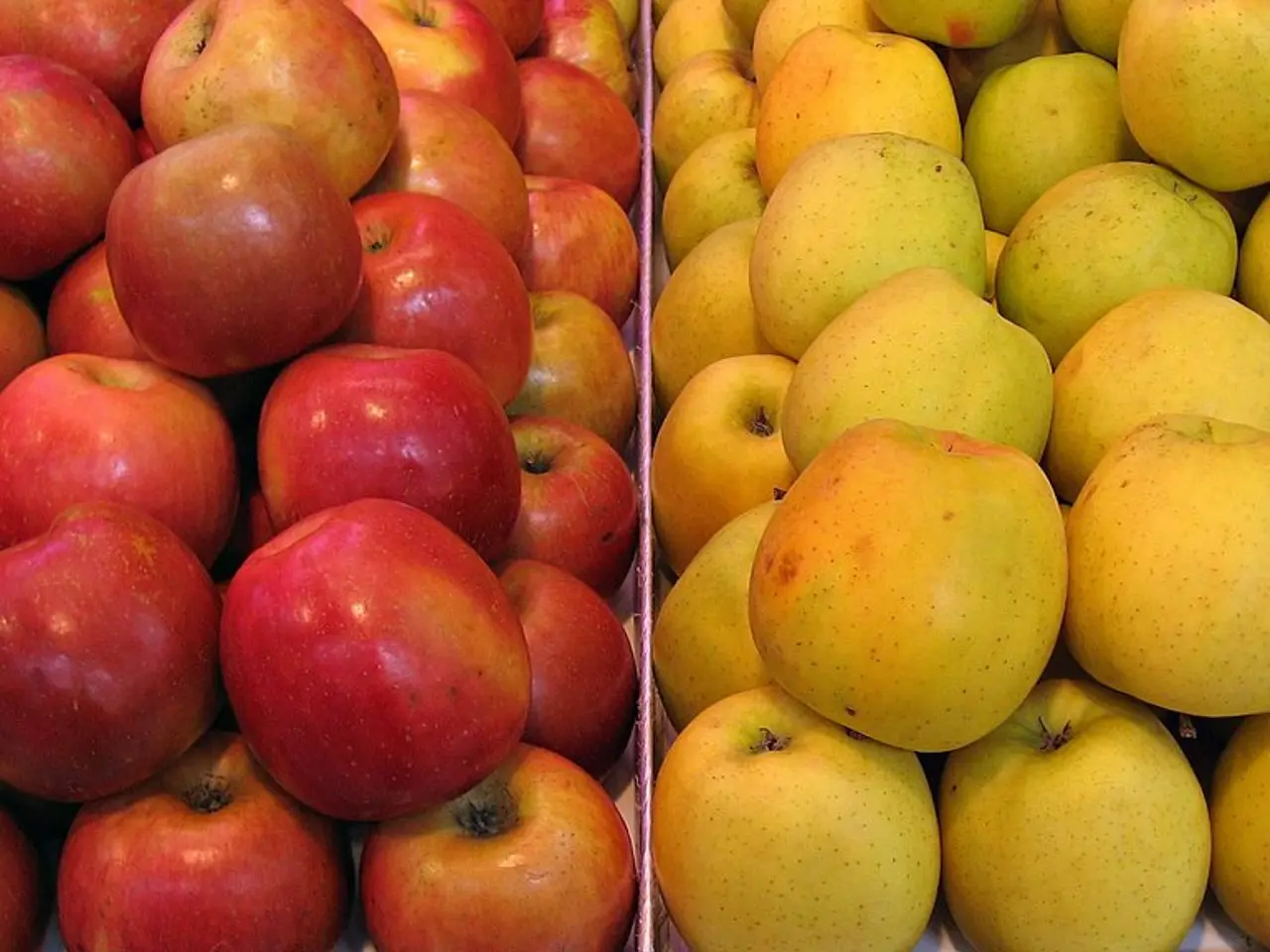Method for Preserving Apples
Apples are a popular fruit known for their crisp texture and sweet taste. But did you know that certain apple varieties can be stored for only a few weeks, while others can last all winter long? Here's a guide on how to store apples for extended periods, ensuring they remain fresh and delicious.
Ideal Storage Conditions
To store apples long-term, maintain a steady cool temperature between 30-35°F (-1 to 2°C). Avoid fluctuations or heat sources like radiators or vents. High humidity (90-95%) is also essential to prevent apples from shriveling, but avoid excess moisture that causes rot. Proper airflow is crucial to prevent moisture buildup and ethylene gas, which accelerates spoilage.
Storage Methods
Individual Wrapping
Wrapping apples individually in paper (e.g., newsprint or tissue paper) or placing them in breathable bags reduces ethylene concentration and moisture buildup. Avoid plastic bags unless they are specifically designed to be breathable.
Wooden Crates
Wooden crates offer good airflow and are traditional storage methods. However, they may need humidity control.
Sand/Sawdust Storage
Sand or sawdust storage can maintain humidity and protect apples from bruising. However, it requires careful moisture monitoring.
Choosing the Right Apples
Choose storage-friendly apple varieties such as Granny Smith or Fuji with thick skins and low water content. Avoid varieties like Red Delicious that spoil faster.
Handling and Maintenance
Gently handle apples to avoid bruising, and remove any damaged or rotten fruits before storage to reduce spoilage risk. Regularly check apples for rotten fruit to prevent the spread of rot.
Storage Solutions Compared
| Method | Advantages | Disadvantages | |------------------------|-----------------------------------|-------------------------------| | Individual Wrapping | Reduces moisture, ethylene buildup| Time-consuming | | Wooden Crates | Good airflow, traditional | May need humidity control | | Sand/Sawdust Storage | Maintains humidity, prevents bruising | Requires careful moisture monitoring|
Storing Cut or Peeled Apples
For cut or peeled apples, store in airtight containers with minimal moisture and consider lemon juice to prevent browning.
For those with large apple trees and ample storage space, an apple rack can be a useful investment. Apples can be stored in a cold and humid spot such as an unheated basement, cellar, unheated garage, or a cool room with the radiator turned off. Apples can also be stored in clear freezer bags or paper bags in the refrigerator for up to a week.
When storing apples over winter, a method is wrapping each apple in a single sheet of newspaper and placing them in single layers on a tray. Late apple varieties, such as 'Newton Wonder', 'Bramley's Seedling', and 'Ashmead's Kernel', need to ripen in storage over four or five weeks and can last throughout the winter months if stored correctly.
Early apple varieties, such as 'Beauty of Bath' and 'Worcester Pearmain', don't tend to keep well and should be eaten within a fortnight of harvesting. Harvest apples carefully, keeping the apple stalk intact to prevent rotting.
Following these guidelines can help extend apple freshness for several months, making apples available long after harvest.
Incorporating the home-and-garden aspect, you might consider utilizing wooden crates or an apple rack for long-term apple storage. These traditional methods offer good airflow, similar to home storage solutions like unheated basements, cellars, or garages. For those with limited space, an apple rack can be a practical investment inside the home.
On the other hand, if you fancy a touch of vintage charm in your home-and-garden décor while keeping apples fresh, consider wrapping individual apples in newspaper before placing them in a cool, dark spot for storage. This method is particularly well-suited for late apple varieties like 'Newton Wonder', 'Bramley's Seedling', and 'Ashmead's Kernel', which can last throughout the winter months when stored correctly.



